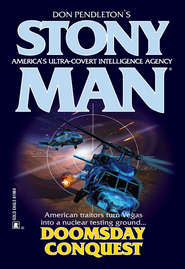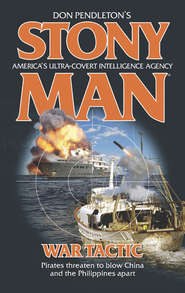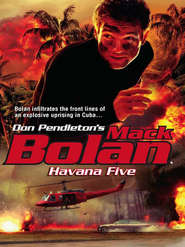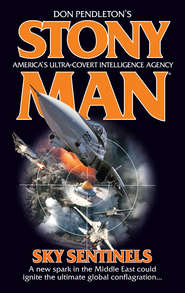По всем вопросам обращайтесь на: info@litportal.ru
(©) 2003-2024.
✖
Toxic Terrain
Автор
Год написания книги
2019
Настройки чтения
Размер шрифта
Высота строк
Поля
“Is it what I think it is?” Bowman asked.
“I won’t have the test results until tomorrow,” Grevoy said, “but it looks like it might be. I’ve seen it before. Bovine spongiform encephalopathy. Mad cow disease.”
“How’s that possible?” Bowman asked. “This calf can’t be but four months old. It takes years for an animal to die from BSE.”
“I know. I think we’re dealing with something we’ve never seen before. And it’s extremely bad.”
“We’d better start riding back to the truck if we’re going to get out of here before sunset,” Bowman said.
Grevoy packed his tissue samples in the dry-ice packs in his saddlebag and the pair mounted their horses. They had ridden nearly an hour to get to the infected herd and had about fifty minutes before the sun set. They had good horses, but even a healthy, strong horse would have a difficult time negotiating the North Dakota Badlands in the dark.
They hadn’t ridden fifteen minutes before they heard the “whoop-whoop-whoop” of helicopter blades breaking the near silence that usually blanketed the rough country. On rare occasions one of the oil companies with wells in the Badlands would fly a helicopter out to a drill site, but not often because the bizarre rugged terrain of the area, with its deep crevasses and gullies carved out of the soft bentonite clay soil, offered few places to land a helicopter. Bowman’s grandfather had once described the Badlands as “mountains that go down into the earth instead of up out of it.”
The helicopter skimmed over the top of a butte and hovered about twenty feet above the trail. The horses Grevoy and Bowman rode were strong and sure of foot—they weren’t easily spooked and wouldn’t get upset over anything as mundane as a rattlesnake or a mountain lion. But they were not used to helicopters, and Grevoy’s horse reared up, tossing him to the ground. Ropes fell from the helicopter, and armed men clad in black combat gear slid down to the ground. Bowman reached for the .338 Marlin Express in her saddle scabbard, but before she could pull the lever-action carbine free of its leather, the armed men had combat rifles pointed at both her and Grevoy.
Several pairs of hands pulled Bowman off her horse and threw her face-first to the ground. She looked over and saw Grevoy trying to fight back. One of the men smashed the butt of his collapsible rifle stock into Grevoy’s head, knocking him unconscious. A couple of men tied Bowman’s hands behind her back and bound her feet together. The last thing she saw before they put the hood over her head was a group of men removing the saddles and bridles from their horses and setting the animals free. Anyone who saw them would assume they were wild horses that had strayed outside the confines of Theodore Roosevelt National Park, at least until they got close enough to see the brands. Then she felt a thud on the back of her head and the lights went out.
1
The beauty of the North Dakota Badlands surrounded Mack Bolan as he rode across the terrain on horseback, following Dr. Kristen Kemp, co-owner of a large-animal veterinary clinic in Grassy Butte. Her partner, Pam Bowman, had disappeared a few days earlier, along with Roger Grevoy, a former Pentagon researcher who specialized in communicable diseases.
Grevoy had done some work for Stony Man Farm, an intelligence organization that operated so far under the radar that only the President of the United States and a select few knew of its existence. Grevoy’s drinking had eventually destroyed his once-promising career and taken over his life.
The last Bolan had heard, Grevoy was getting back on track. He had several years of sobriety and had been rebuilding his relationship with his ex-wife and kids. When Grevoy disappeared, his ex-wife had contacted Hal Brognola, director of the Sensitive Operations Group, based at Stony Man Farm, and asked for his help, which was how the Executioner found himself riding a horse through the North Dakota Badlands, with the comely large-animal veterinarian riding the horse in front of him.
Suddenly Kemp stopped her horse at the beginning of a tree-lined ravine. “They found Pam’s horse in this wooded draw. Its saddle and bridle were gone. They haven’t found Rog’s horse yet.”
“What were they doing out here?”
“I’m not sure.” Bolan got the sense Kemp was holding back on him, but he said nothing.
“What do you do again, Mr. Cooper? And why are you out here?”
Bolan repeated his cover story, that he was Matt Cooper, a security consultant who’d worked with Grevoy on a government contract when the man had been with the Department of Defense. The two had become friends, and he was here at the request of Grevoy’s family. The details were vague enough to raise Kemp’s suspicions.
“So what, exactly, is a ‘security consultant’?” she asked, examining the Executioner’s face.
“I’m an expert on securing things.”
“How about killing things?” Kemp asked.
“Sometimes that’s part of the job.” The woman seemed about to respond—she struck Bolan as someone who liked to have the last word—but before any sound could leave her lips the crack of a rifle split the air and a crater erupted in the trunk of a Rocky Mountain juniper tree just inches from her head.
“Get down,” Bolan shouted. He’d already pulled his gun from the scabbard, a DPMS LR-260L, an AR-10-type rifle chambered for the .260 Remington round, and pulled Kemp off her horse. He noted that she’d grabbed her Marlin 1895G Guide carbine from its scabbard. She was nearly down when a second round hit her horse and it fell on top of the vet, pinning her leg to the ground.
“You okay?” Bolan asked.
“I think so, but my foot’s caught in the stirrup.”
Bolan looked for something to use for a lever but found nothing better than the rifle in Kemp’s hands. Unfazed by the rounds that continued to hit the dead horse providing cover between them and the shooter, Bolan lowered the hammer to the half-cocked position and wedged the stock in between the horse’s carcass and the ground, as close as he could get to Kemp’s leg, and tried to lift the dead animal. He managed to get enough space for the woman to work her foot free. They crawled away from the horse, keeping out of range from the rifle shots that flew over their heads. The rough terrain provided the pair with cover from their would-be assassin—or assassins—and they made it into the temporary safety of the wooded draw.
Bolan checked Kemp’s leg, which was already showing bruises but didn’t seem broken. “You’re bleeding,” he said, wiping a trickle of blood from her cheek.
“I think I got hit with slivers from the juniper.”
“Stay down,” he told her. “I saw where the shooter’s hiding. I’m going to try to get a shot at him.” Bolan crept along a low wash in the draw, which would have been a streambed in those few times of the year when the arid Badlands had measurable precipitation. He reached an outcropping near the end of the draw, edged his rifle between a couple of boulders and peered through the Nikon Laser IRT scope. He made out the top of a desert-camo boonie hat poking over a ridge exactly 436 yards to the southeast, according to the scope’s built-in range finder. He placed the crosshairs of his reticle on the part of the boonie hat that would contain at least a portion of the wearer’s head, and squeezed off a round.
It was an easy shot and Bolan watched the shooter’s cap disappear, along with a good chunk of the back of his head, judging by the red spray that went with it. The soldier watched for other signs of movement from behind the ridge, waiting several minutes before he moved from his hide.
Meanwhile, Kemp had worked her way along the wash and joined him. “I told you to stay back,” he told her.
“You told me to stay down. I stayed down. Besides, I don’t recall signing the contract that made you the boss of me. Did you get him?”
“I think so. I’m waiting to see if there’s anyone else out there.” Kemp took off her cowboy hat and flung it Frisbee-style into the open. Nothing happened.
Bolan checked out Kemp’s firearm. The Marlin 1895G Guide was a good choice for the sort of work she was likely to need it for—stray buffalo, hormone-crazed Angus bulls, maybe an elk, a stray cougar, or even a bear—but it made a lousy sniper rifle. It fired the slow-but-hard-hitting .45-70 Government round, making it ideal for big game in close quarters, but practically useless at 400-plus yards.
“You familiar with an AR?” he asked her.
“I paid my way through college by serving in the military,” she said. “It’s been a while, but I could still field-strip that thing down to the firing pin.”
He handed her the DPMS and took the Marlin. “Cover me. I’m going to sneak around the ridge and make my way up to the shooter. If you see anything moving that’s not me, shoot it.”
Using the terrain and flora for cover, Bolan made his way to the back of the ridge. Using a pair of compact binoculars, he scanned the area for other potential shooters but saw nothing other than a horse tethered to some brush at the base of the ridge opposite the gully where he’d left Kemp. He made his way up the ridge and found the shooter’s body slumped over an old, dry log, the back of his head blown away.
When Kemp saw Bolan standing on the ridge, she jogged over and climbed to the top. Bolan had turned the body over and retrieved a wallet from the back pocket of the jeans. The vet looked at the shooter’s face and Bolan asked, “Know him?”
“Not really. I’ve seen him in town once or twice, but he’s not from around here. He works for Ag Con.” She looked at the bloody corpse. “He worked for Ag Con,” she corrected herself.
“Agricultural Conglomerates?” Bolan asked.
“Yeah, they’re the biggest employer in the county. Hell, in this half of the state. They must have three or four hundred employees, but they don’t hire any locals.”
“You or Ms. Bowman ever do any work for them?”
“Not directly. They have their own vets on staff.”
“Ever do anything for them indirectly?” Bolan asked. Once again he sensed that she was holding out on him.
Kemp looked him up and down. “Don’t take this the wrong way,” she said, “but when it comes to Ag Con, we’ve developed the habit of watching what we say around here. They’ve been known to bring in a few ‘security consultants’ of their own. Near as I can tell, you just saved my life—maybe, maybe not. How can I be one hundred percent sure I can trust you?”
Bolan looked straight into Kemp’s sparkling green eyes. “You can’t,” he replied. “How can you be one hundred percent sure about anything?”
“You can’t.”
“Sometimes you just have to believe what your gut tells you,” Bolan said.
“Is that one of your security-consultant aphorisms?”











